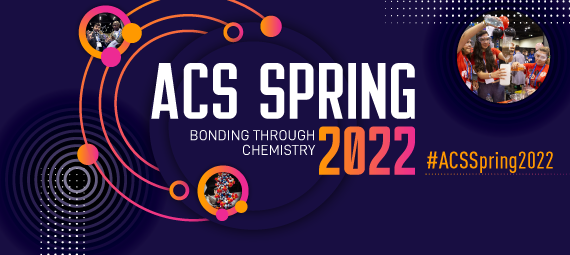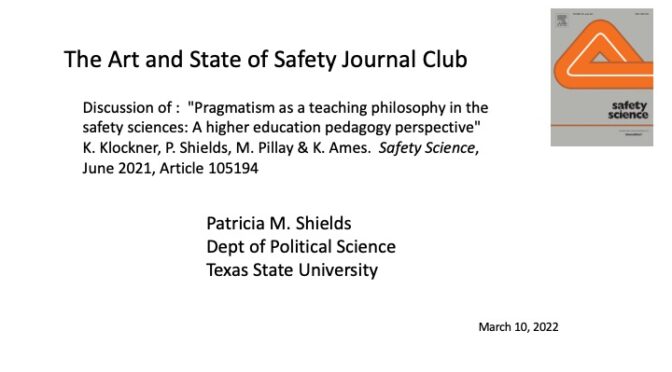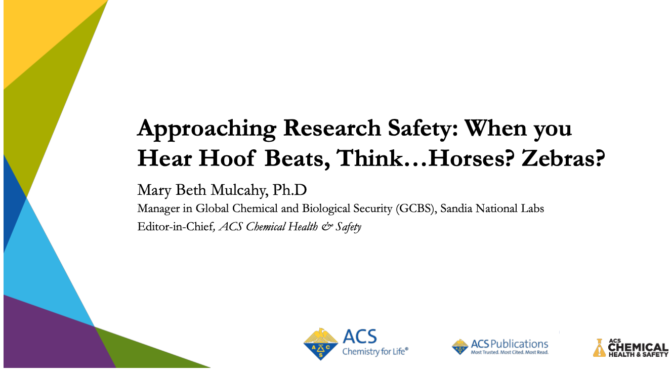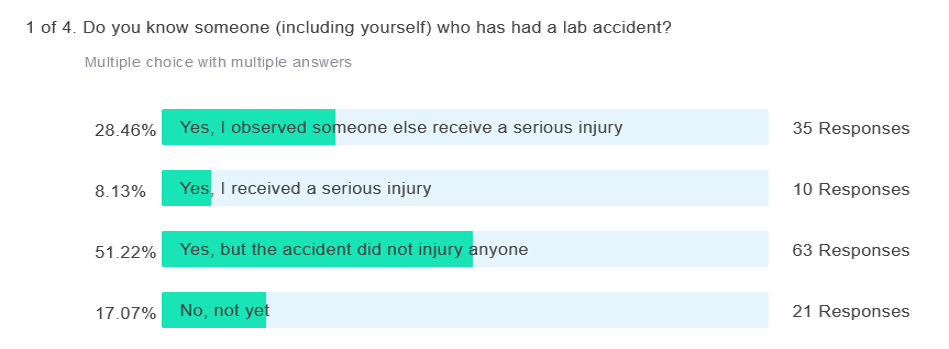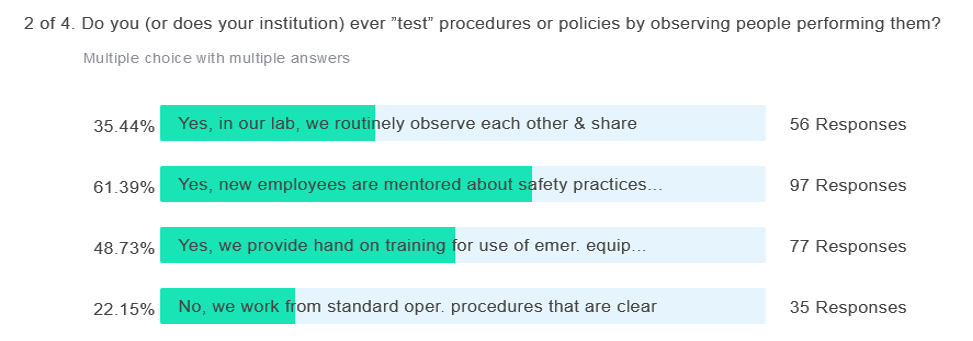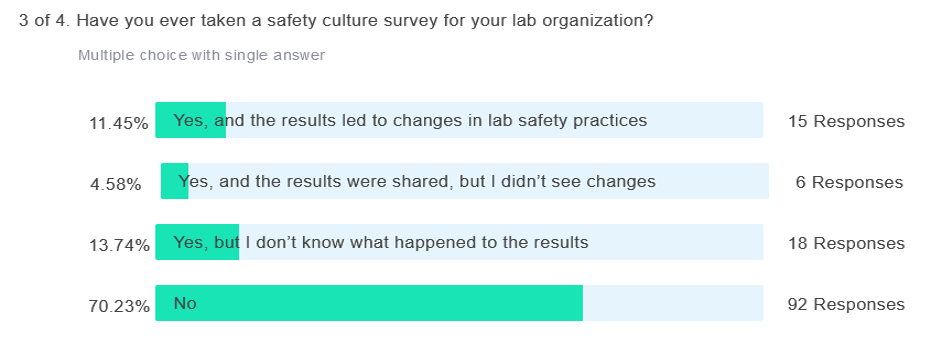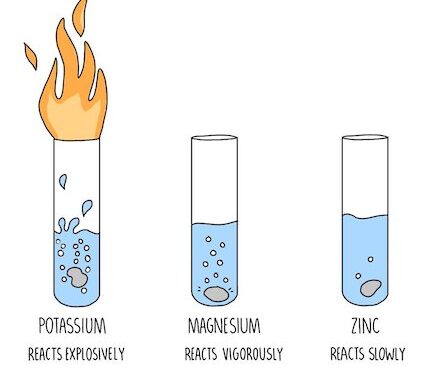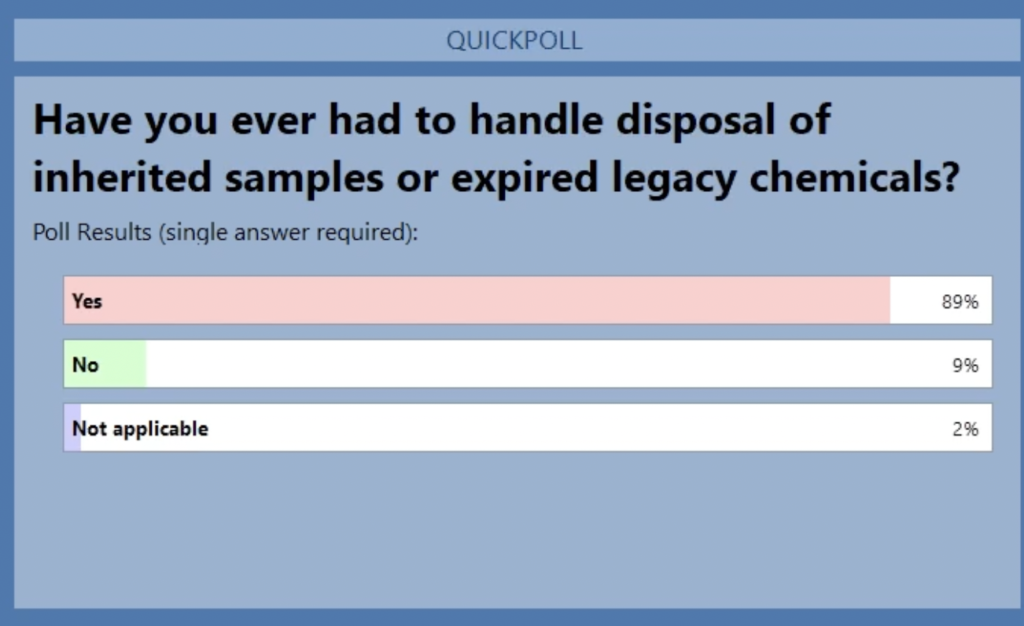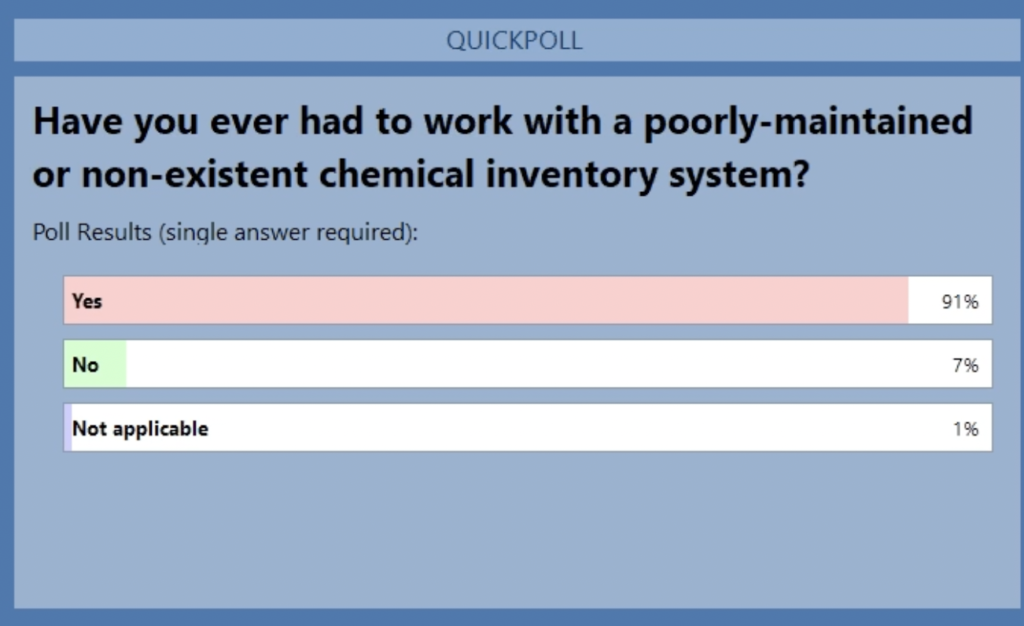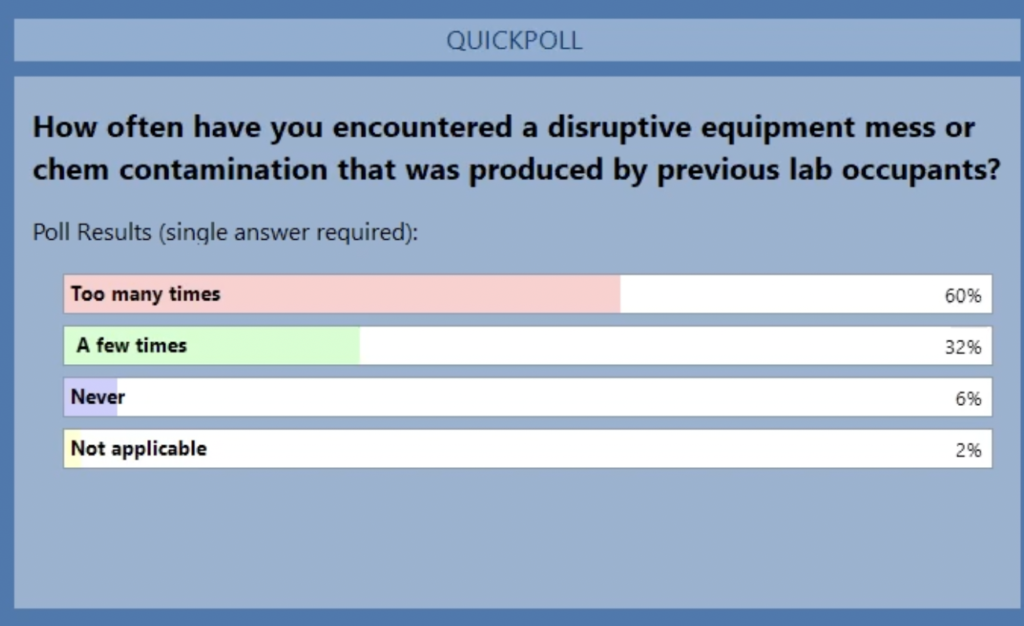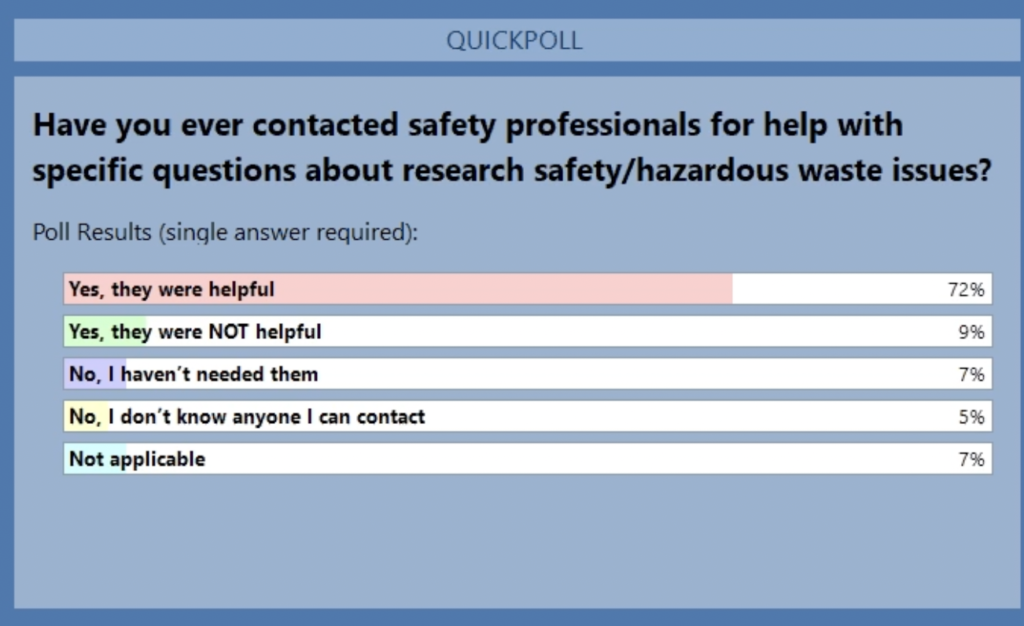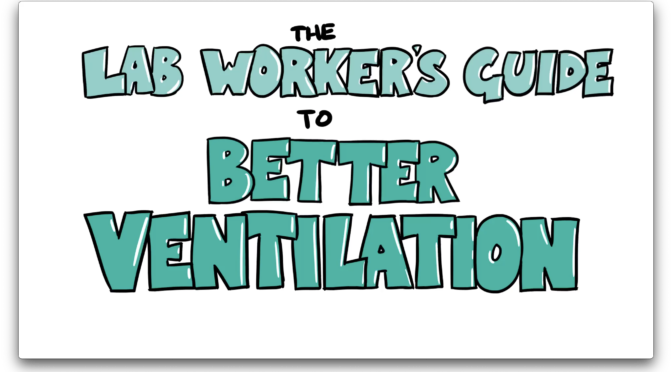CHAS Journal Club Nov 10, 2021
On November 10, the CHAS Journal Club discussed two articles related to social safety considerations in research environments. The discussion was lead by Anthony Appleton, of Colorado State University. Anthony’s slides are below and the comments from the table read of the two articles can be found after that.
Table Read for The Art & State of Safety Journal Club
Excerpts from “Safe fieldwork strategies for at-risk individuals, their supervisors and institutions” and “Trauma and Design”
Full articles can be found here:
Safe fieldwork strategies: https://www.nature.com/articles/s41559-020-01328-5.pdf
Trauma and Design: https://medium.com/surviving-ideo/trauma-and-design-62838cc14e94
Safe fieldwork strategies for at-risk individuals, their supervisors and institutions
Everyone deserves to conduct fieldwork[a] as safely as possible; yet not all fieldworkers face the same risks going into the field. At-risk individuals include minority identities of the following: race/ethnicity, sexual orientation, disability, gender identity and/or religion. When individuals from these backgrounds enter unfamiliar communities in the course of fieldwork[b][c][d], they may be placed in an uncomfortable and potentially unsafe ‘othered’ position, and prejudice may manifest against them. Both immediately and over the long term, prejudice-driven conflict can threaten a researcher’s physical health and safety[e], up to and including their life. Additionally, such situations impact mental health, productivity and professional development.
Given the value of a diverse scientific community[f], the increased risk to certain populations in the field — and the actions needed to protect such individuals — must be addressed by the entire scientific community if we are to build and retain diversity in disciplines that require fieldwork. While many field-based disciplines are aware of the lack of diversity in their cohorts, there may be less awareness of the fact that the career advancement of minoritized researchers can be stunted or permanently derailed[g] after a negative experience during fieldwork.
Defining and assessing risk
Fieldwork in certain geographic areas and/or working alone has led many researchers to feel uncomfortable, frightened and/or threatened by local community members and/or their scientific colleagues. Local community members may use individuals’ identities as a
biased marker of danger to the community, putting them at risk from law enforcement and vigilante behaviours. Researchers’ feelings of discomfort in the field have been reaffirmed by the murders of Black, Indigenous and people of colour including Emmett Till, Tamir Rice, Ahmaud Arbery and Breonna Taylor; however, fieldwork also presents increased risk for individuals in other demographics. For example, researchers who wear clothing denoting a minority religion or those whose gender identity, disability and/or sexual orientation are made visible can be at increased risk when conducting fieldwork. Several studies have documented the high incidence of harassment or misconduct that occurs in the field. Based on lived experience, many at-risk individuals already consider how they will handle harassment or misconduct before they ever get into the field, but this is a burden that must be shared[h][i] by their lab, departments and institutions[j] as well. Labs, departments and institutions must address such risks by informing future fieldworkers of potential risks and discussing these with them, as well as making available resources and protocols for filing complaints and accessing[k][l][m] training well before the risk presents itself.
Conversations aimed at discussing potential risks rarely occur between researchers and their supervisors, especially in situations where supervisors may not be aware of the risk posed[n] or understand the considerable impact[o] of these threats on the researcher, their productivity and their professional development. Quoted from Barker[p][q]: “…faculty members of majority groups (such as White faculty in predominantly White institutions (PWI)) may not have an understanding of the ‘educational and non-academic experiences’ of ethnic minority graduate students or lack ‘experience in working in diverse contexts’.” This extends to any supervisor who does not share identity(ies) with those whom they supervise, and would have had to receive specific training on this subject matter in order to be aware of these potential risks.
Dispatches from the field
The following are examples of situations that at-risk researchers have experienced in the field: police have been called on them; a gun has been pulled on them[r][s][t][u] (by law enforcement and/or local community members); hate symbols have been displayed at or near the field site; the field site is an area with a history of hate crimes against their identity (including ‘sundown towns’, in which all-white communities physically, or through threats of extreme violence, forced people of colour out of town by sundown); available housing has historically problematic connotations (for example, a former plantation where people were enslaved); service has been refused (for example, food or housing); slurs have been used or researchers verbally abused due to misunderstandings about a disability; undue monitoring or stalking by unknown and potentially aggressive individuals; sexual harassment and/or assault occurred. Such traumatic situations are a routine expectation in the lives of at-risk researchers. The chance of these scenarios arising is exacerbated in field settings where researchers are alone[v][w], in an unfamiliar area with little-to-no institutional or peer support, or are with research team members who may be uninformed, unaware or not trusted. In these situations, many at-risk researchers actively modify their behaviour in an attempt to avoid the kinds of situations described above. However, doing so is mentally draining, with clear downstream effects on their ability to conduct research.[x][y][z]
The isolating and severe burden of fieldwork risks to minoritized individuals means that supervisors[ad] bear a responsibility to educate themselves[ae] on the differential risks posed to their students and junior colleagues in the field. When learning of risks and the realized potential for negative experiences in the field, the supervisor should work with at-risk researchers to develop strategies and practices for mitigation in ongoing and future research environments.[af] Designing best practices for safety in the field for at-risk researchers will inform all team members and supervisors of ways to promote safe research, maximize productivity and engender a more inclusive culture in their community. This means asking[ag][ah][ai][aj][ak][al][am] who is at heightened risk, including but not limited to those expressing visible signs of their race/ethnicity, disability, sexual orientation, gender identity/expression (for example, femme-identifying, transgender, non-binary) and/or religion (for example, Jewish, Muslim and Sikh[an][ao]). Importantly, the condition of being ‘at-risk’ is fluid with respect to fieldwork and extends to any identity that is viewed as different[ap] from the local community in which the research is being conducted. In some cases, fieldwork presents a situation where a majority identity at their home institution can be the minority identity at the field site, whether nearby or international. Supervisors, colleagues and students must also interrogate where and when risk is likely to occur: an individual could be at-risk whenever someone perceives them as different in the location where they conduct research. Given the variety of places that at-risk situations can occur, both at home, in country or abroad, researchers and supervisors must work under the expectation that prejudice can arise in any situation.[aq]
Strategies for researchers, supervisors, and institutions to minimize risk
Here we provide a list of actions to minimize risk and dange[ar][as]r while in the field compiled from researchers, supervisors and institutional authorities from numerous affiliations. These strategies are used to augment basic safety best practices. Furthermore, the actions can be used in concert with each other and are flexible with regards to the field site and the risk level to the researcher. These strategies are not comprehensive; rather, they can be tailored to a researcher’s situation.
We acknowledge that it is an unfair burden that at-risk populations[at] must take additional precautions to protect themselves. We therefore encourage supervisors, departments and institutions to collectively work to minimize these harms by: (1) meeting with all trainees to discuss these guidelines, and maintaining the accessibility of these guidelines (Box 1) and additional resources (Table 1); (2) fostering a department-wide discussion on
safety during fieldwork for all researchers; (3) urging supervisors to create and integrate contextualized safety guidelines for researchers in lab, departmental and institutional resources.
A hold harmless recommendation for all
Topics related to identity are inherently difficult to broach, and may involve serious legal components. For example, many supervisors have been trained to avoid references to a researcher’s identity and to ensure that all researchers they supervise are treated equally regardless of their identities.[au] Many institutions codify this practice in ways that conflict with the goals outlined in the previous sentence, as engaging in dialogue with at-risk individuals is viewed as a form of targeting or negative bias. In a perfect world, all individuals would be aware of these risks and take appropriate actions to mitigate them and support individuals at heightened risk. In reality, these topics will likely often arise just as an at-risk individual is preparing to engage in fieldwork, or even during the course of fieldwork. We therefore strongly encourage all relevant individuals and institutions to ‘hold harmless’ any good-faith effort to use this document as a framework for engaging in
a dialogue about these core issues of safety and inclusion. Specifically, we recommend that it should never be considered a form of bias or discrimination for a supervisor to offer a discussion on these topics to any individual that they supervise[av][aw][ax][ay]. The researcher or supervisee receiving that offer should have the full discretion and agency to pursue it further, or not. Simply sharing this document [az]is one potential means to make such an offer in a supportive and non-coercive way, and aligns with the goals we have outlined towards making fieldwork safe, equitable and fruitful for all.
Trauma and Design
1. Validating your experience. It’s important to know that workplace trauma can be destabilizing, demoralizing, and dehumanizing. And when it happens in a design-centric organization where there are sometimes shallowly professed[ba] values of human-centeredness, empathy, and the myth of bringing your full, authentic self to work, it can leave you spinning in a dizzying state of cognitive dissonance and moral injury.
A common side effect of workplace abuse is invalidation, which is defined as “the rejection or dismissal of your thoughts, feelings, emotions, and behaviors as being valid
and understandable.” Invalidation can cause significant damage or upset to your psychological health and well-being. What’s worse, the ripple effects of these layers of dismissal are traumatic, often happen in isolation, and may lead to passive or more overt forms of workplace and institutional betrayal. If this is (or has been) your experience, it’s important to know that (1) you are not alone and (2) your experience is valid and real.[bb]
2. Seeking safety. Workplace-induced emotional trauma is very real and, unfortunately, on the rise. The research is also clear: continuous exposure to trauma can hurt our bodies and lead to debilitating levels of burnout, anxiety, depression, traumatic stress, and a host of other health issues. Episodic and patterned experiences like micro- and macro-aggressions, bullying, gaslighting, betrayal, manipulation, and other forms of organizational abuse can have both immediate and lasting psychological and physiological effects. So, what can we do?[bc]
• To go to HR and management or not? There is a natural inclination to document and
report workplace abuse and to then work within the HR structures that are in place where we work. But many profit- and productivity-driven workplaces are remarkably inept at putting employees (the primary human resource) first[bd][be][bf][bg]. The nauseating effects of this can lead to deeply entrenched incompetent or avoidant behaviors by the very people who we expect to listen to and support us (read: HR). Even with this said, there is value in documenting events as they occur so that you can remember the details and not forget the context later. You may also have a situation so egregious or blatantly illegal that documentation will be necessary.
• Do you need accommodations? Employees need to be cared for in ways that our leaders don’t always recognize, nor value. Workplace trauma, as well as current and past trauma, can get exacerbated resulting in impairing symptoms or a legally protected disability accommodation. Sometimes seeking out accommodations as part of the process can hold your immediate supervisor accountable (as well as their respective leadership chain) to meet your needs. The Job Accommodation Network (JAN) is a source of free, expert, and confidential guidance on job accommodations and disability employment issues. JAN provides free one-on-one practical guidance and technical assistance on job accommodation solutions.
• Do not “manage up.” Many of the avenues that HR systems afford us can lead to empty promises and give us a sense of helplessness and hopelessness. As a result, the harm done can lead to a retraumatization of what you’ve already been enduring. Additionally, as a social worker, it would be disingenuous and unethical for me to suggest that you find ways to “manage up” or gray rock[bh] so that you can temporarily minimize the effects[bi][bj][bk]. Managing up is a popular narrative[bl][bm][bn][bo][bp] that, I believe, just perpetuates how we deal with cycles and patterns of abuse — be it in the workplace or elsewhere. And gray rocking, which can be quite effective to get through in the interim, is not a healthy, long-term solution to what you are enduring.
• Where should I turn? Let me be honest: many HR programs are ill-equipped, lack the knowledge, or are simply unwilling to hold perpetrators of workplace abuse accountable. If this is not the case where you work, congratulations! But if the aforementioned is familiar, it is crucial to practice self-compassion and self-trust and to seek reassurance and psychological and cultural safety with trusted friends or colleagues. Let them know that you may not want or need their advice, but rather their trust and confidence in listening to and witnessing your story.[bq][br] Can this friend or colleague help you assess the risks of staying? You may find it empowering to think this through with them and to also write about it. Writing into the wound[bs], as Roxane Gay has said, may also be a helpful, therapeutic exercise with a licensed professional or in community with others who witness, trust, and respect you. Please remember: your friends and colleagues are just that — friends and colleagues. Sometimes situations are more serious and complex and should be referred to someone who has the cultural and clinical training to help you address the layers of complexity. There may be times when your unresolved trauma, prolonged grief, or more serious and long-lasting symptoms of mental health concerns need to be processed with a licensed professional (more on working with a clinician below).
• Creating your freedom map. There are times when you have exhausted your options; you’ve played by the rules set forth and are caught in a neverending wait and see. Your current reality might be that leaving is simply not an option. You might be the only paid worker in your family or perhaps you need the insurance or the job market might be too volatile. These are all valid reasons for choosing to not leave — or to not leave just yet. However, if leaving feels scary for other reasons (fear of failing, worried about what people will think, concerned about damage to your professional reputation), consider this: are you willing and able to test the limits of what your body can endure? Sometimes leaving — a radical act in and of itself — is the best option for your health, well-being, and future work. If you’re at this stage, I strongly suggest devising a plan of action for leaving and map out your escape plan. Some of the questions to consider might be: When will I leave? What do I need in order to leave? What do I want to do next? How can I take care of myself now and in the future? Who can I rely on as part of my support system? Spelling this out and naming what you need in your freedom map will give you power.
3. Healing in community and finding and talking to a mental health professional. There are enormous benefits to healing with others and working with a licensed clinical mental health professional (i.e., clinician, therapist, psychotherapist, counselor, etc). Therapy can provide a safe space to share and understand the interconnected dots of what you’re going through. Sometimes trauma in the workplace can trigger unresolved childhood traumas and other struggles that we, as a society, have been conditioned to either just deal with or suppress. Have grit! Be resilient! It’s not that bad! [bt][bu][bv][bw]These are white supremacy and productivity narratives that infuriate me. If it were that easy, you wouldn’t still be reading. What’s more, the power of community healing is found in the validation, empowerment, and organizing to challenge fear-based work culture — not to just learn to cope with dysfunction[bx][by]. If you are new to therapy or revisiting it after having a break from it, consider this part of the overall commitment to yourself for lifelong healing and recovery. There is a growing amount of culturally responsive therapy options — many of which did not exist even a few years ago. Below are just a few resources for finding an inclusive, culturally responsive therapist.
5. Learn and understand the language of trauma and what it means to be trauma-informed — especially in the context of design. There is a literacy around trauma[bz][ca] that is missing in our organizations, in ourselves, and in our design work.[cb][cc][cd] Now more than ever, we need to be at least trauma-informed so that we can lead and work within trauma-responsive teams and organizations. Responding to this need is one of the reasons why I started Social Workers Who Design. My own practice and research are committed to being trauma-informed and becoming trauma-responsive in design.
[a]Fieldwork certainly broadens both the types of risks and their severity compared to lab work. There were four employee work related deaths at UVM while I was working there for 25 years – 3 were field events and 1 was lab related.
[b]It seems like this would still apply broadly to conferences, workshops, collaborations, and other work-related travel for STEM students
[c]Agreed!
[d]ACS has raised this concern for its meetings; I’m sure it’s not being done in a proactive fashion…
[e]certainly a consideration that is applicable to research well beyond fieldwork!
[f]I think that the 21st Century will need to find ways to move beyond colonial science which is part of the reason this article needed to be written.
[g]Or that those researchers will avoid fieldwork that could benefit from their participation
[h]By sharing this burden we can also develop a wider range of ways to minimize these risks.
[i]Even writing and talking about the burden can help make it seen and believed. Probably not quantitated though, which is what modern management wants to do to address complex issues.
[j]This is another challenge in the academic environment, where the research topic and methods are often driven by the investigator rather than their supervisor. Many times we in EHS hear of the field work being conducted only after it is underway and a regulatory question arises.
[k]Interesting choice to say ”accessing” rather than “requiring”. On the other hand, can cultural literacy be trained or does it have to be lived?
[l]I think the idea behind the training is to get people to practice thinking differently about situations – an opportunity to simulate this conversation before it needs to be had in real life.
[m]Yes, that’s a more valuable approach to training than an information transfer approach (i.e. woman in Afghanistan have to be extra careful this year).
[n]Recognize hazards
[o]Assess risks
[p]Intersectionality is a key element here – even if within ethnic groups, male and female perceptions of risks can be quite different in valid ways.
[q]Yes! Intersectionality is VERY important.
[r]This was one of the deaths at UVM – a anthropologists in Brazil was shot dead by a local
[s]When I did fieldwork for the USDA, I got a very quick rundown of things from my lab manager. Basically, make sure that your USDA badge is easily accessible just in case anyone questions your presence. However, working for the govt may also be reason for someone to be hostile to you, so basically if a local challenges you, just pack up and leave. Their biggest challenge in the region was being shot at by anti-govt folks.
[t]Good point. We need to learn de-escalation approaches that don’t undermine the point we are trying to make.
[u]Is this in the US or overseas?
[v]Is working alone a methodological advantage in some research settings?
[w]Depending on what you are doing, too much noise can be a problem.
[x]I have heard this from some of my students.
[y]I think about this whenever I hear the “don’t work alone” or “don’t work odd hours” policies. I’ve known many people who did these 2 things in order to avoid someone they have had bad interactions with – including in my own graduate lab.
[z]I wonder how much of those “unhealthy attitudes and behaviors” seen in academia are due to some of these situations; trying to avoid certain people or situations.
[aa]This whole section talks basically about a risk assessment that should be done before the fieldwork begins. I wonder if there are any regulatory bodies that have authority or provide guidelines for doing this. Or, if universities have policies on travel for work, etc. Otherwise, the concern if it’s just “you should do this” and not enforced anywhere is that people won’t do it, which is maybe why this is a problem in the first place
[ab]The only “regulatory body” with international jurisdiction is the Dept of State, who tracks political volatiality, but leaves specific activities up to the individual
[ac]CSU offers a huge array of assistance to our high-risk and/or international travelers. You MUST register, otherwise these benefits will and/or may not be available to you.
[ad]Does supervisor = funder in this context? I know that the some parts of the Dept of Defense has much stricter safety expectations than academia.
[ae]For my research group meeting we start with a safety moment and diversity moment where we present something from our culture or background that helps educate us all but not necessarily in predicting risks.
[af]Minimize risks and Prepare for emergencies
[ag]Verbally inquiring? I’m not sure how this would be approached….
[ah]Not to sound like too much of an enthusiastic convert, but this is potentially a space in which apply RAMP could be used – i.e. if you encourage a general conversation about recognizing hazards in different research settings, you can invite the conversation without making certain individuals feel explicitly called out – and giving them a space where it is expected/comfortable to bring about hazards that others may not have considered.
[ai]A great way to do this is to simply ask “How can I best support you in your research efforts?”
[aj]It seems like part of this is the PI identifying themselves the potential risks of their students based on obvious information available or differences in the environment, so this sort of risk analysis could be made available to students without them having to come forward explicitly
[ak]Jessica and Anthony, those are both great ideas. Maybe implement RAMP and explain it by saying that we are trying to best support them in their research efforts.
[al]Kali, when I initially read this the idea of trying to predict the situations someone might face in an unfamiliar location seemed impossibly daunting, but the way you phrased it makes it much more achievable!
[am]I think the danger of PIs simply doing this for themselves is exactly what is pointed out in the article. One’s own experiences and biases may blind them to hazards that may seem obvious to others. In some situations it could actually be worse to have a PI think they figured it all out without consulting with their research group members because you then have a top-down approach that those it is enforced upon do not feel invited to discuss or challenge.
[an]This reminded me of the paper that was shared in the slack channel on finding PPE solutions while wearing a hijab and PPE/cleanroom issues with long hair which is important to religions such as Sikhism.
[ao]I like that paper because it took the approach of “what can we do to resolve the issue” rather than “well you are the one creating the problem.”
[ap]I suspect that members of the local community who cooperate with an unwelcome researcher are also at risk.
[aq]Does this increased risk arise from researchers asking culturally insensitive questions in a prying way? Not all cultures will share their thought processes with anyone who asks.
[ar]When you manage people as a group versus individuals, one can create a sense of everyone belonging so that there is no “other.”
[as]This is an interesting comment that I believe I am interpreting another way. I have found that being managed “as a group” is part of the problem. Some managers fail to see the ways individuals in their groups are impacted differently by situations or policies – then if that person questions or challenges it, they are seen as “the problem.”
[at]Are there off-setting opportunities that at risk populations benefit from?
[au]A question of equality versus equity
[av]This definitely depends on the workplace…if you don’t have the support behind you, one could be risking their job if they spoke out or asked about an individual’s identity.
[aw]Or you could be risking your job as a supervisor if you assume your risks are the same as everyone else. Trying to increase safety should not come with a sense of fear.
[ax]Tough one to do well. Offer to group is easier than an individual otherwise you do feel targeted.
[ay]I agree with this. It’s hard when it’s only a single student or small group going though. Perhaps there is a procedure to analyze risk you can use with everyone equally.
[az]I think that this is a good opportunity to raise this concern; particularly with subject matter experts from other disciplines who may have experience in the locations being researched.
[ba]Meaning, it is something the institution says it values but doesn’t follow through on that value?
[bb]This is about acknowledging others feelings and letting them feel heard.
[bc]One of the best books I’ve ever read is “Difficult Conversations” by Douglas Stone, Bruce Patton, and Sheila Heen. In that book, the authors highlight the central problem that we can see the intentions behind our own actions, and the impacts of others’ actions, but others’ intentions and the impacts of our own actions are often opaque to us. It may take, dare I say it, grit, to initiate a conversation about behaviors that have caused you pain, but I don’t believe there’s any other way to resolve those situations.
[bd]True
[be]My experience is the Human Resources staff are in a silo of their own, separated from the mission of the larger organization. This means that they have a hard time connecting to an evolving workplace
[bf]SInce they get all of the hard personnel cases, they tend to manage to avoid the last bad experience rather than to respond to emerging challenges
[bg]I also think it is important to keep in mind that HR is hired to protect the company – not individuals. It is why I find it awkward when people automatically just say “take it to HR.” HR are trained to be mediators to try to get things to quietly blow over. They aren’t going to charge in to fight your battles for you.
[bh]Putting the definition here because I had to look it up: The grey rock method is a strategy some people use when interacting with manipulative or abusive individuals. It involves becoming as unresponsive as possible to the abusive person’s behavior.
[bi]not quite clear on these meanings in this context
[bj]Gray rock basically would mean being unresponsive to “defuse” the traumatic situation (or person initiating it).
[bk]https://180rule.com/the-gray-rock-method-of-dealing-with-psychopaths/
[bl]Agree that this is a very misused term. The concept of “managing up” really only works if all actors are well-meaning. If someone is being hostile or abusive, telling the victim of the behavior to “manage up” is really just telling them that no one is going to help them.
[bm]In this context, “managing up” can mean find allies at your level that can help you identify potential support that are not in your direct reporting line. The caveat here is that my experience is entirely in academia, which has very thin reporting lines with lots of turn over, so working around specific managers is often a less risky approach than it might be in other settings. I have seen it work in some situations and not in other situations. Your Milage May Vary
[bn]To be honest, the definition you used here does not square with the understanding that I have of “managing up.” What you just described is simply looking for other managers (apart from your own) to deal with the situation. “Managing Up” specifically has to do with your relationship with your manager(s).
[bo]I’ve taken one course on “Managing Up”, and the definition I got from it was understanding that your boss is a fallible human being, and that as you get to know them, you should try to interact with them in a way that accommodates that (e.g. following up by phone or in person if you know they’re bad at reading their email).
[bp]I have understood it as being proactive when it comes to solving problems in a way that helps your manager & makes them look good – while also helping yourself. It requires having a clear understanding of what the goals are for both of you – while also recognizing your manager’s strengths and weaknesses relative to your own, and finding a way to work with that. I don’t see anything wrong with that as advice – but the “weaknesses” to be managed here really shouldn’t be outright abusive behaviors that they do not see & work to correct for themselves. You’re an employee – not a punching bag or a therapist.
[bq]I like the suggestion to explicitly mention that a trusting ear and confidence is what is expected instead of advice. I know I appreciate that distinction personally.
[br]As someone who struggles with active listening, and jumps immediately to problem-solving mode, I wholeheartedly agree!
[bs]Particularly if it helps clarify your thoughts, both for yourself and for potential allies
[bt]That’s a sign of a dysfunctional safety culture its just as bad as playing the blame game
[bu]This is well described in a recent article in JCHAS “Listening to the Well, Listening to Each Other, and Listening to the Silence—New Safety Lessons from Deepwater Horizon” https://pubs.acs.org/doi/10.1021/acs.chas.1c00050
The authors describe the HR aspects of the Deepwater Horizon as part of the safety system that led to that explosion
[bv]These are more terms that I feel have been misused and abused. Having grit to try multiple ways to solve a legitimate challenge is good to encourage; “having grit” to put up with someone being abusive towards you is NOT okay to encourage.
[bw]We have been seeing more and more survivors of professional sports experiences describe their experiences publicly and how grit was used as a rhetorical device to avoid case. It’s encouraging to see these people “come out”
[bx]This is certainly very difficult-“challenging fear-based work culture”
[by]I believe that this is one of the reasons that unions arose internationally and are still valued in many countries. Unfortuantely, the regulatory environmenta of the US has taken this peer support function away from unions in favor of simple economic bargaining (I just came from a union meeting at lunch time, where this played out in real time.)
[bz]“Trauma” is a huge word to throw around as its usually meaning a severe emotional response to life-threatening events or series of events that are emotionally disturbing. In my experince, some minorities even find using the word “trauma” offensive. How about depressed, tired, and all those other descriptives.
[ca]There is a cost to identifying one’s status as a victim, not just in social standing, but in personal mental health. It takes a lot of bravery to identify one’s trauma publicly. (See the comments about athletes above.)
[cb]Even after looking at the complete article, I’m confused about what design work this refers to. I can take it two ways:
[cc]1. People who design spaces, web sites, projects(?) with social dynamics in mind?
[cd]2. People who work in design firms (i.e. creative thinkers) who find those firms toxic. I have known several people with that experience. Some creative thinkers can be rather deaf to other people’s feedback.
